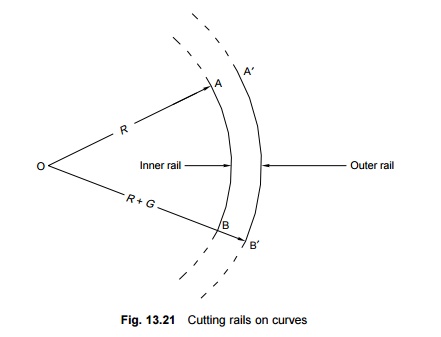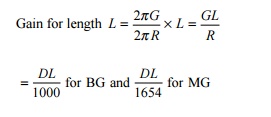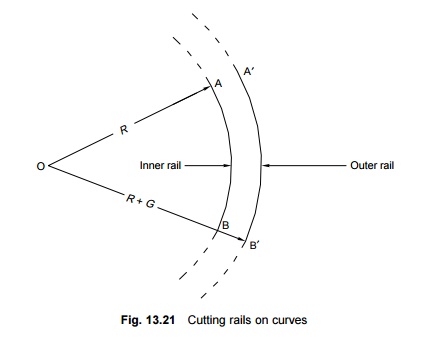Chapter: Civil : Railway Airport Harbour Engineering : Railway Engineering : Curves and Superelevation
Cutting Rails on Curves

Cutting Rails on Curves
Rails on curves are usually laid with square joints. The inner
rail gradually gains the lead over the outer rail on a curved track. The excess
length D, which the inner rail gains over the outer rail for a length L
of the circular curve is calculated as follows (Fig. 13.21).
(i) Difference
in circumference of outer rail and inner rail (i.e., gain):
2p R
- 2p R
(R - G ) = 2p G
Gain for
length 2p R = 2p G

where L
is the length of outer rail of the circular curve, R is the radius of
outer rail of the circular curve, D is the degree of curvature of outer
rail, and G is the dynamic gauge (i.e., gauge + width of rail head),
which is 1750 mm for BG and 1058 mm for MG.

Normally, when the inner rail of
the curve leads over the outer rail by an amount equal to half the pitch of the
fish bolt holes, the inner rail is cut by an amount equal to one full pitch and
another hole is drilled for fastening the joint with a fish plate. The number
of rails to be cut for a particular curve is worked out depending upon the
degree and length of the curve and the pitch of the bolt holes.
Related Topics